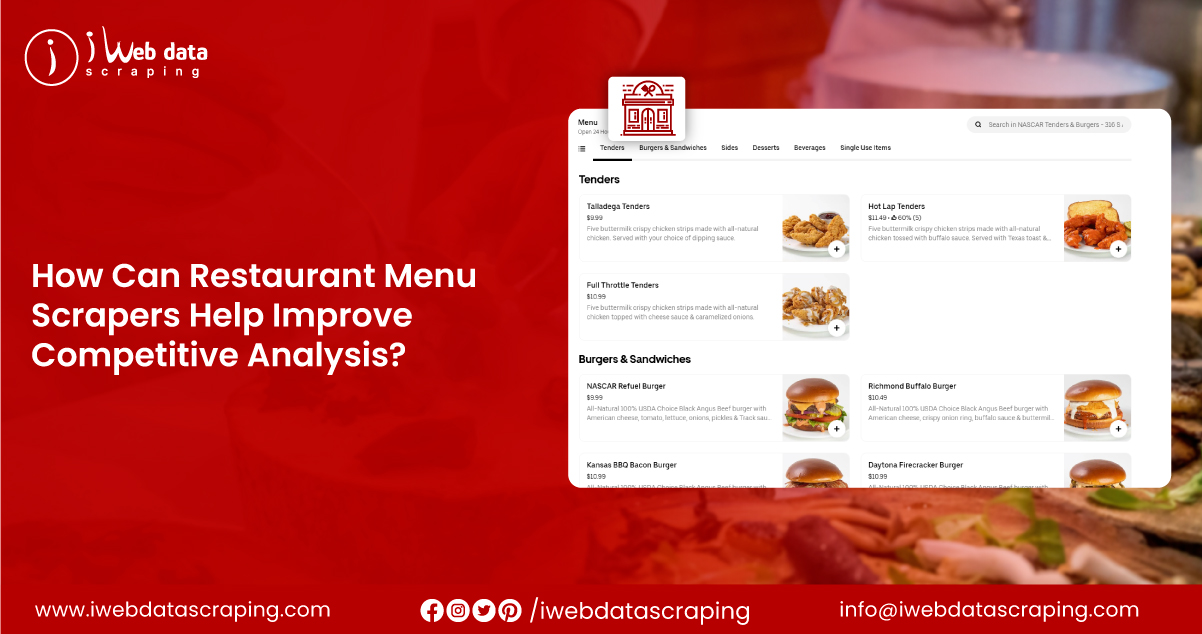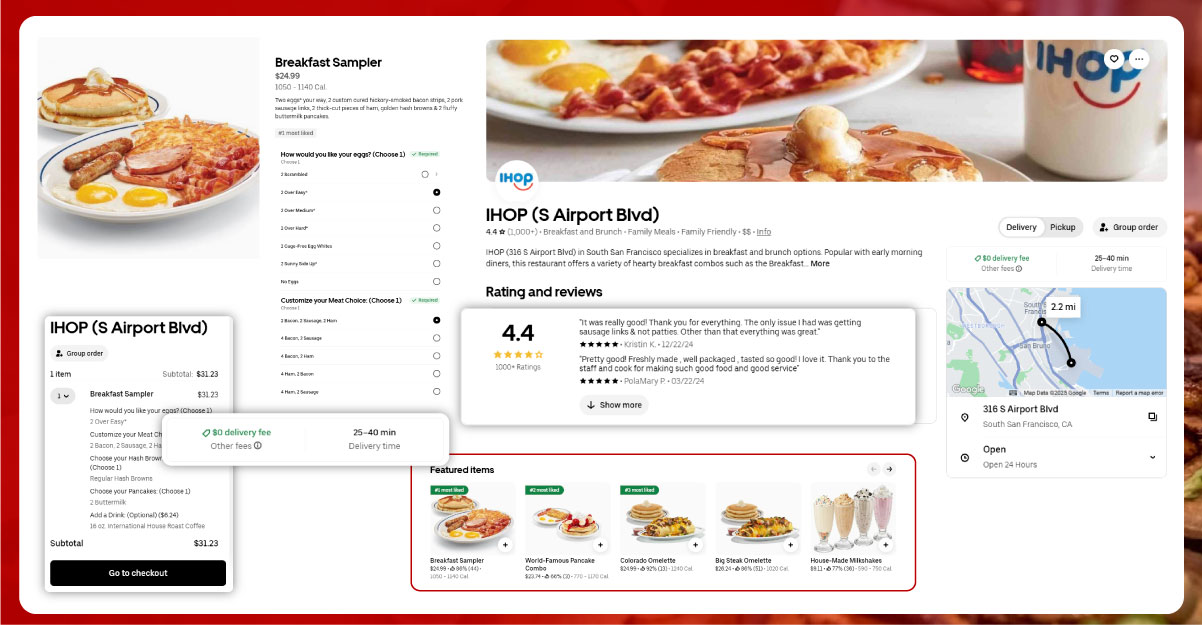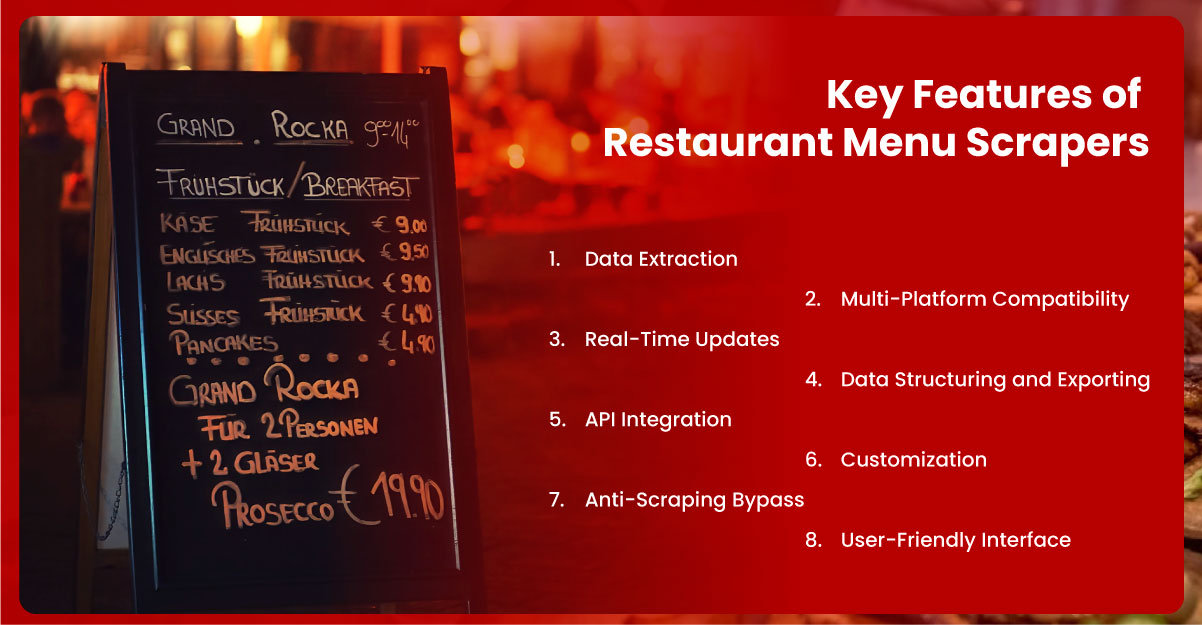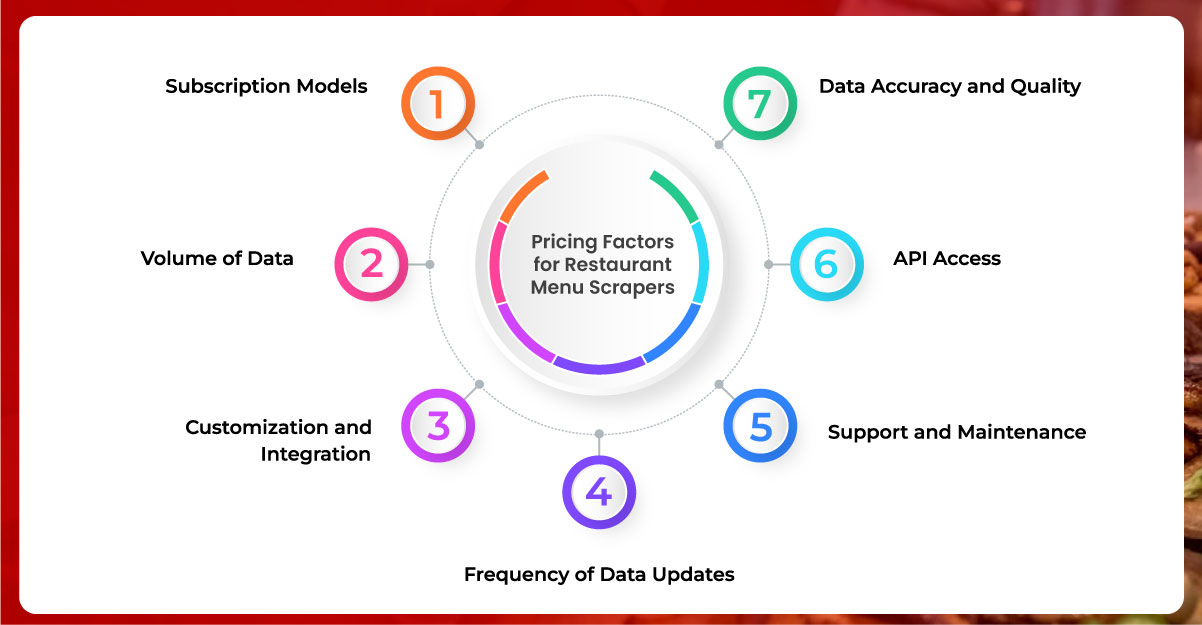
In today's fast-paced digital world, businesses require access to accurate and timely data for informed decision-making. For the restaurant industry, menu data offers essential insights into pricing trends, customer preferences, competition, and food choices. Restaurant Menu Scrapers have emerged as powerful tools for collecting this data from various online platforms. By utilizing Restaurant Menu Data Scraping Services , restaurants can stay competitive, understand market trends, and optimize their menu offerings. Web scraping enables businesses to gather valuable data on dish prices, descriptions, and customer reviews from competitor menus, food delivery apps, and restaurant websites. These insights help fine-tune pricing strategies, track industry trends, and enhance customer experiences. With the ability to scrape data in real-time, Restaurant Menu Scrapers help businesses keep their online menus accurate and updated. Ultimately, these services provide a competitive edge by enabling restaurants to make data-driven decisions in a constantly changing market.

The restaurant sector is highly dynamic, with frequent menu changes, new dishes, and fluctuating prices. With the growing demand for online food ordering and delivery platforms, restaurant menu data scraping has gained prominence. By scraping menu data from multiple sources, businesses can gather insights that help them understand the competitive landscape, track industry trends, and optimize their menu offerings.
1.Competitive Analysis: Restaurants can scrape menus from their competitors' websites and food delivery platforms to stay informed about pricing strategies, popular dishes, and promotional offers. This data helps them adjust their offerings to remain competitive and appealing to customers. Web Scraping for Restaurant Menu Data allows businesses to gather valuable insights efficiently.
2.Market Insights: Businesses can spot rising food trends and customer preferences by analyzing menu trends across various regions. Scraped data can reveal patterns in dish popularity, pricing, and even seasonal menu changes, allowing restaurants to adapt more efficiently. Scrape Restaurant Menu Prices to monitor price fluctuations and adjust their strategies accordingly.
3.Menu Optimization: Web scraping tools can help restaurants track the prices and descriptions of similar dishes, enabling them to fine-tune their menu for cost-effectiveness and customer appeal. With scraped data, restaurants can make informed decisions on menu design, pricing strategies, and food pairings. Using Real-Time Restaurant Menu Scraping Tools, they can ensure that their menus are always up to date.
4.Customer Experience: With the correct menu data, restaurants can ensure that their online menu mirrors their in-house offerings, which enhances the overall customer experience. Inaccurate or outdated online menus can lead to customer dissatisfaction, and scraping ensures that customers always see the most accurate menu options.

A restaurant menu scraper is a specialized tool that automatically extracts relevant data from online menus. These scrapers are designed to handle various challenges associated with scraping menu data, including navigating complex website structures and dealing with anti-scraping mechanisms. The following features are commonly found in restaurant menu scrapers:
1.Data Extraction: A restaurant menu scraper's core feature is its ability to extract key information from menus, such as dish names, descriptions, ingredients, prices, and nutritional details. Some advanced scrapers can even extract customer ratings and reviews, which are valuable for analyzing customer preferences.
2.Multi-Platform Compatibility: Many menu scrapers are designed to work across various platforms, from individual restaurant websites to food delivery apps like Uber Eats, Grubhub, DoorDash, and more. This multi-platform scraping capability is essential for businesses gathering data from multiple sources to build a comprehensive menu database.
3.Real-Time Updates: Menu items and prices often change without prior notice, making real-time updates a crucial feature of web scraping tools. Some advanced restaurant menu scrapers can continuously monitor selected websites and alert users to any changes in menu data. This ensures that businesses always have access to the most current information.
4.Data Structuring and Exporting: Scraped data is often unstructured, making it challenging to analyze directly. Many restaurant menu scrapers include features that help structure the data in a readable format, such as CSV, Excel, or JSON files. This allows businesses to analyze the data more efficiently or integrate it into other data management systems.
5.API Integration: Many restaurant menu scrapers come with API integrations for larger businesses or tech-savvy users. This allows users to pull menu data directly into their own systems or applications, making it easier to automate processes and streamline data collection.
6.Customization: Not all menus are created equal, and businesses may need to scrape data in specific formats depending on their use case. Many scrapers offer customization options that allow users to specify the types of data they want to extract, the websites they want to target, and even the frequency of data collection.
7.Anti-Scraping Bypass: Websites often employ anti-scraping measures to prevent unauthorized data extraction, such as CAPTCHA systems, IP blocking, and rate-limiting. Advanced restaurant menu scrapers come equipped with techniques to bypass these obstacles, such as rotating IPs, proxies, or employing CAPTCHA-solving tools.
8.User-Friendly Interface: While scraping tools can be complex, many restaurant menu scrapers aim to offer a user-friendly interface that minimizes the technical knowledge required. This feature mainly benefits businesses without dedicated technical teams who want to benefit from menu data scraping.

The cost of restaurant menu scraping services can vary significantly based on several factors. Here are the key pricing elements that determine the cost of using a menu scraper:
1.Subscription Models: Many web scraping tools are offered on a subscription basis, with pricing tiers based on usage. Basic plans may cost $50 to $100 per month and allow users to scrape a limited number of menus. More advanced plans can cost upwards of $500 per month and provide additional features such as real-time data extraction, API access, and multi-platform scraping.
2.Volume of Data: The amount of data you need to scrape directly impacts the cost. If you need to scrape menus from many restaurants or across multiple regions, the scraper will need to handle larger volumes of data, which may require more processing power and bandwidth. High-volume plans are more expensive, ranging from $100 to $1,000+ per month.
3.Customization and Integration: As mentioned earlier, many restaurant menu scrapers offer customization options, such as targeting specific data points or integrating with your existing systems. These advanced features typically come at a premium, with custom-built scrapers or API integrations often adding a cost of $500 to $2,000 per project, depending on complexity.
4.Frequency of Data Updates: Real-time data scraping, where the tool automatically tracks and updates menu changes, is often more expensive than periodic scraping. Scraping multiple times per day or week can incur higher costs due to the increased demand for servers and data processing resources.
5.Support and Maintenance: Premium web scraping services often include ongoing support and maintenance, which can influence pricing. If your scraper needs regular updates to cope with website changes or adjustments to bypass anti-scraping measures, the provider may charge additional fees for these services. Support packages can range from $100 to $500 per month, depending on the level of service required.
6.API Access: Access to a restaurant menu scraper's API is usually available at an additional cost. API plans are typically designed for businesses that want to integrate scraped data into their systems, and pricing can range from $200 to $1,000 per month, depending on usage volume and data access frequency.
7.Data Accuracy and Quality: Some scraping tools provide enhanced data quality guarantees, offering data that has been cleaned and structured for easy analysis. Tools with higher accuracy or more sophisticated data processing features typically have higher price tags.
Restaurant menu scrapers are potent tools that can help businesses in the food industry gain valuable insights into market trends, competitor strategies, and customer preferences. From real-time data extraction to multi-platform compatibility, these scrapers have various features designed to optimize collecting and analyzing Restaurant Menu Datasets .
Regarding pricing, businesses should consider factors such as the volume of data they need, the frequency of updates, the level of customization required, and whether API integration is necessary. By understanding these pricing elements, businesses can choose the right scraping solution to meet their needs, ensuring they stay competitive and agile in a fast-paced market. Whether for enhancing customer experiences or fine-tuning menu offerings, Restaurant Menu Data Scraping Services offer significant value to those in the restaurant business looking to leverage data for success.
Experience top-notch web scraping service and mobile app scraping solutions with iWeb Data Scraping. Our skilled team excels in extracting various data sets, including retail store locations and beyond. Connect with us today to learn how our customized services can address your unique project needs, delivering the highest efficiency and dependability for all your data requirements.